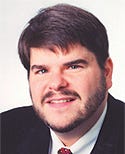To Regulate or Facilitate?
Originally Published MDDI July 2006FROM THE EDITORS The acting FDA commissioner sees the agency as an active participant in bringing radical new health technologies to market. But does the rank and file share his view?
July 1, 2006
FROM THE EDITORS
|
Acting FDA commissioner Andrew von Eschenbach says all the right things to industry's ears. At the annual meeting of the Medical Device Manufacturers Association in June, he made some sweeping and impressive statements about the agency's place in the upcoming healthcare technology revolution.
Of particular interest was his characterization of FDA as “not here just to regulate, but to facilitate.” To make his point, he cited several programs that will be part of the Medical Device Innovation Initiative, which is CDRH's contribution to the Critical Path Initiative. This is an agencywide effort to streamline the process of getting technologies that will transform healthcare to the market. For example, he said, “soon to open are state-of-the-art research facilities, so we can be a science-based and science-led regulatory agency, so we can have the tools that will help power [the upcoming revolution in medical technology]. We are committed to producing an infrastructure for a new bridge to adapt…to a new reality.”
FDA's traditional mission has been to protect the public health. The FDA Modernization Act of 1997 changed that to protect and promote the public health. Judging from von Eschenbach's words, the “promote” part should have greater emphasis under his term.
“We are a science-based regulatory agency, and I am…committed to preserving that value and identity,” he said. “But we can go further. The challenge is to not just be that, but to be a science-and-technology-led facilitation agency that can illuminate the pathway forward. This is a fantastic opportunity to bring the fruits of progress to the public whose lives depend upon [medical] advances. We are at an extraordinary moment in time, and technology will be such an important part of that process.”
Very impressive. But is it realistic?
Anyone who is a veteran of dealing with FDA will tell you that it is not run from the top down, but rather from the bottom up. Its performance depends not on what its top people say, but on what its people in the middle and lower tiers do. If they don't buy into a change, especially something as broad as its acting commissioner suggests, it won't happen. And getting them to buy in will take more than just von Eschenbach's sunny disposition, positive energy, and carefully chosen words. A major cultural shift, unlike anything the agency has seen in decades, will have to take place.
Why? Because, from anecdotes that get around, it seems that many of FDA's foot soldiers aren't fond of change. Do the members of FDA's rank and file really see themselves as facilitators? It's doubtful. The agency culture still retains an overarching emphasis on protecting the public health. Its reviewers and investigators often get more praise—internally and from the public and media—for preventing an unsafe technology from coming to market or issuing a warning letter than for enabling a safe and effective new technology to come to market or declaring a firm in compliance with the QSR. Until that culture and that incentive structure change, FDA and industry will too often consider each other adversaries and not partners.
So how can von Eschenbach get his staff to buy into his vision? We'll leave the specifics to the management gurus. But at the very least, it would help if Congress would confirm him to the post permanently. At least then the FDA staff would know he was going to be sticking around for a while and probably shouldn't be ignored.
Erik Swain for the Editors
You May Also Like



